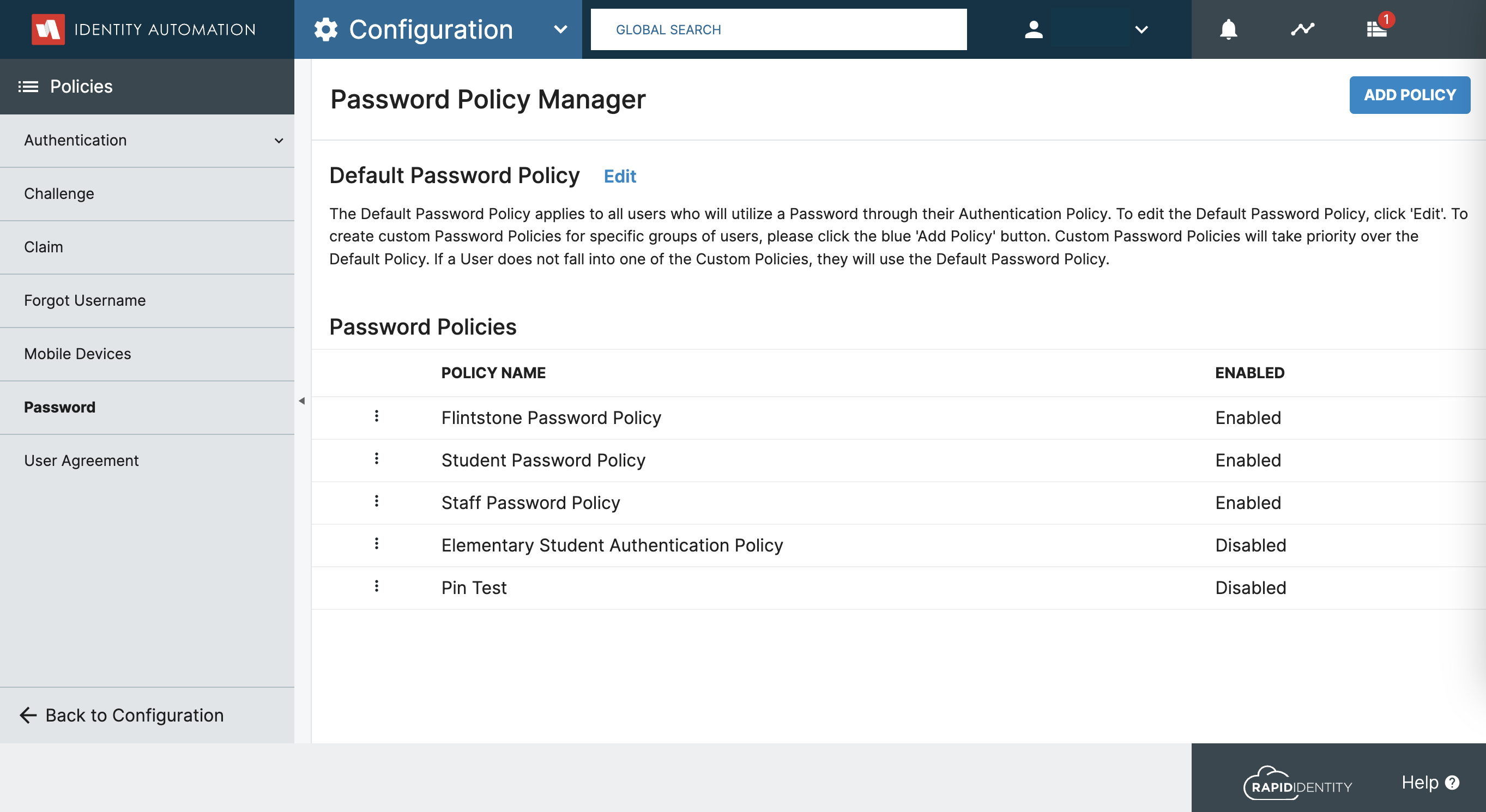- 04 Mar 2024
- 1 Minute to read
- Print
- DarkLight
Authentication
- Updated on 04 Mar 2024
- 1 Minute to read
- Print
- DarkLight
Authentication
This component of the project is the actual setup of how different groups of customer end users (students, teachers, staff) will login or authenticate to the system. This could be a mixture of passwords, TOTP, webAuthn, Pictograph, QR Codes, or Challenge Questions. During this stage of your Onboarding, we will discuss industry best practices in regards to security, and how to create a balance between protection while maximizing classroom time.
Password Policies
Password Policies within RapidIdentity ensure that when passwords are set or reset, they comply with your organization's policy for complexity. They can also prevent insecure values as well as prevent unwanted characters. RapidIdentity Password Policies are independent of any password policies you may have in place with your Active Directory, Google, or Azure environments.

Student Authentication
RapidIdentity Authentication options ensure you do not have to sacrifice security for ease of use. Even younger students can easily gain access to the resources they need with a variety of passwordless and student-friendly authentication methods including QR Code badges, pictograph authentication and more.

Staff Authentication (MFA)
RapidIdentity Authentication options also include a wide variety of methods you can use to balance security, compliance requirements and the needs of educators and staff. These methods can be combined to provide secure complaint two factor authentication for any combination of staff including privileged accounts, educators, and even all staff

Forgot Password/Forgot Username Policies
A core feature of RapidIdentity is the ability to handle Self Service Password resets for all staff and students. This feature requires configuration to determine how to authenticate that user requesting a reset and is highly customizable to the degree of different policies for staff, students, or even for different grade levels.


